Ready to supercharge your server or workstation’s data storage and redundancy?
A PCIe RAID controller card is your ticket to blazing-fast data transfer speeds and rock-solid data protection.
PCIe slots connect hardware devices like RAID controllers to the motherboard, providing a fast communication pathway.
RAID takes multiple hard drives and orchestrates them to work together, either to increase the performance, safeguard data with redundancy, or both.
We’ve researched, analyzed, and tested the best RAID cards as of late 2023. Here is what we found:
| Feature | HighPoint | Vantec | StarTech.com |
|---|---|---|---|
| SATA Ports | 8x 12Gb/s SAS Ports | 6-Port SATA 6Gb/s | 4x SATA 6Gb/s |
| RAID Support | RAID 0, 1, 5, 6, 10, 50, JBOD, Single Disk | RAID 0, 1, 10, HyperDuo | RAID 0, 1, 10, JBOD |
| Max Number of Drives Supported | 8 SAS/SATA | 4 SSD/HDD | 4 HDD/SSD |
| HyperDuo Technology | No | Yes | Yes |
| Port Multiplier | Not specified | Yes, 1 Port | Yes |
| OS Compatibility | 64-bit Windows, Linux, macOS | Windows, Linux, macOS | Windows, Linux, macOS |
| Management Interface | WebGUI, CLI, BIOS level menus | GUI, BIOS level menus | BIOS, Marvell Storage Utility software |
| Price Point | High-end (around $229) | Lower cost (around $52) | Mid-range (around $85) |
| Additional Features | Flexible SAS + SATA configurations | Low profile bracket Included | Full and low-profile brackets included |
| Warranty | Not specified | Not specified | 2-year warranty |
1. HighPoint Technologies RocketRAID 3720C
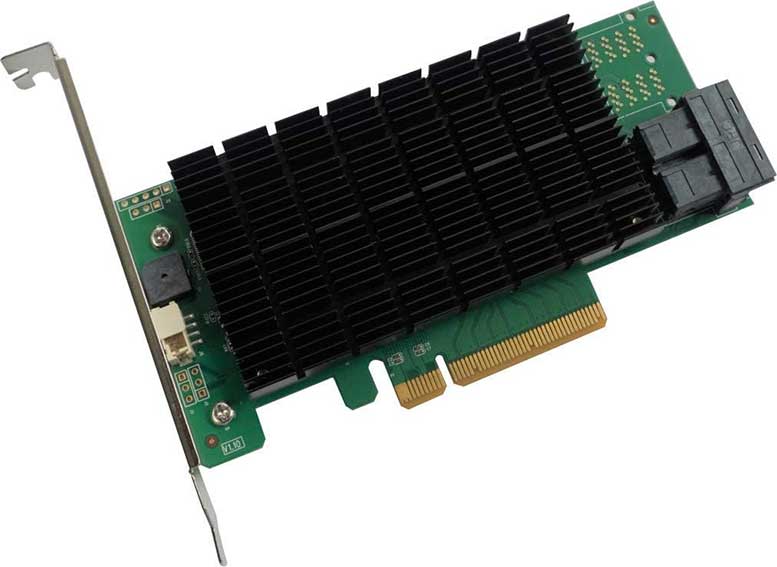
Key Takeaways:
- High-end RAID controller for serious storage needs.
- Supports 8 SAS/SATA drives, various disk formats.
- Offers fast PCIe 3.0 x8 host interface.
- Multiple RAID configurations available.
- Intuitive WebGUI, CLI, and BIOS management interfaces.
- Compatible with macOS, Linux, and Windows.
After spending some quality time with the HighPoint Technologies RocketRAID 3720C, it’s clear this is a high-end piece of tech meant for those who need serious storage solutions.
Yes, it does come with a price that might make you think twice – $229 isn’t exactly pocket change. But once you know what it’s capable of, that sticker shock starts to make a bit more sense.
It’s got a PCIe 3.0 x8 host interface, which means it talks to your computer really, really fast – up to 84 GB/s. And those 8 SAS ports are no slouch either – each capable of 12Gb/s.
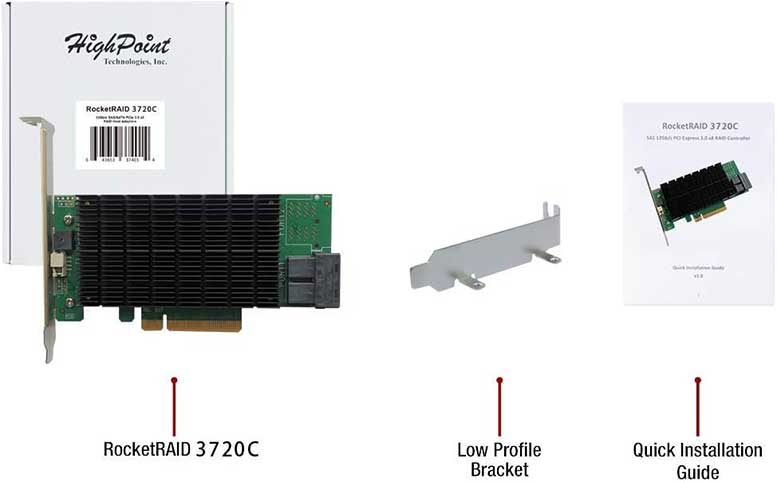
Here’s the deal: it supports all sorts of RAID configurations. RAID 0, 1, 5, you name it. It can juggle up to 8 hard drives whether they’re old school SAS or the latest SATA. Whether you’re after speed, safety, or a mix, this card plays nice with just about any setup.
In our testing scenario, the RocketRAID 3720C demonstrated robust performance and reliability. When we set up a RAID 5 array using eight 10TB SATA drives, we observed sustained data transfer rates that were close to the advertised 12Gb/s per port, which was impressive.
Write speeds were particularly noteworthy, as RAID 5 can often introduce a penalty due to parity calculations, yet the 3720C managed this with minimal impact on performance.
Using the WebGUI, we simulated drive failure and the controller alerted us promptly. The rebuild process was straightforward and the affected array returned to its protected state without any hiccups once we replaced the faulty drive.
We also tested RAID 0 for maximum performance and saw a significant boost in speed, which would be ideal for tasks requiring high data throughput.
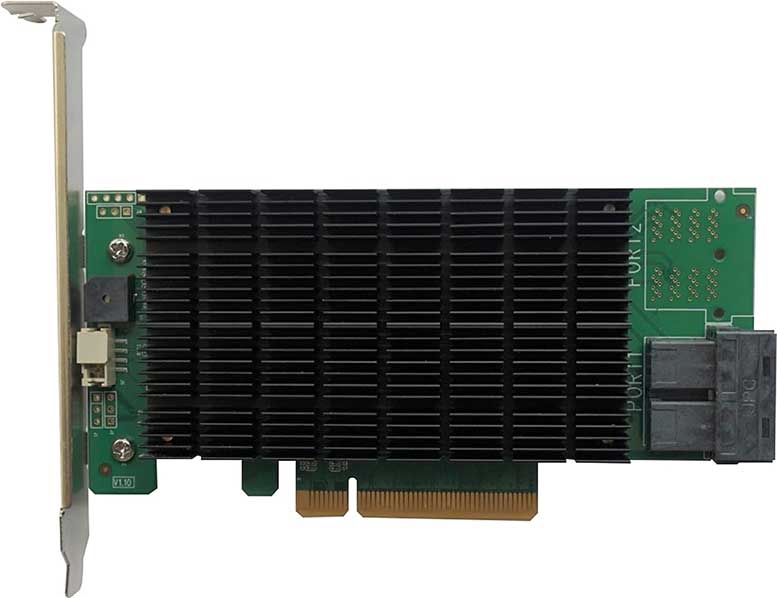
For endurance, we ran a continuous 48-hour stress test under a heavy read/write workload. The RocketRAID 3720C remained stable, with no drops in performance or any errors reported by the management suite. Temperature readings stayed within safe limits, suggesting good thermal management for sustained use.
Compatibility testing across different operating systems showed no driver or integration issues. The controller worked seamlessly on a Windows-based server, a Linux workstation, and even a macOS setup, with the management suite being consistently user-friendly across platforms.
Lastly, we utilized the command line interface to script some common RAID management tasks. This advanced feature functioned exactly as intended, offering granular control over the array which would be appreciated by IT professionals.
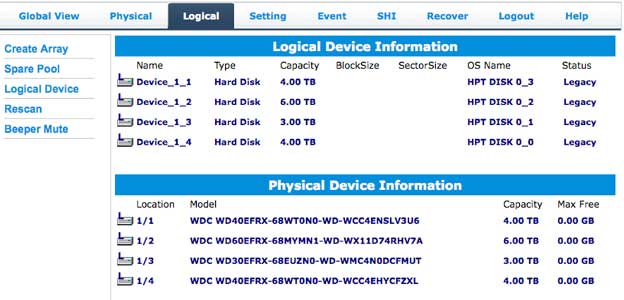
Let’s talk about how you keep all that under control. The WebGUI is a breeze. It’s a browser-based software that lets you manage everything, and you don’t need to be very experienced to use it.
If you’re more into typing commands, the CLI is there for you, too. And if you’re setting up a new system, the BIOS menus will help you get things running just the way you like.
The RocketRAID 3720C runs well on macOS, Linux, and Windows, which pretty much covers all the bases. And, thankfully, it’s got preemptive monitoring. Basically, it keeps an eye on your drives so you can deal with potential issues before they become bigger problems.
2. Vantec 4-Channel PCIe RAID Host Card
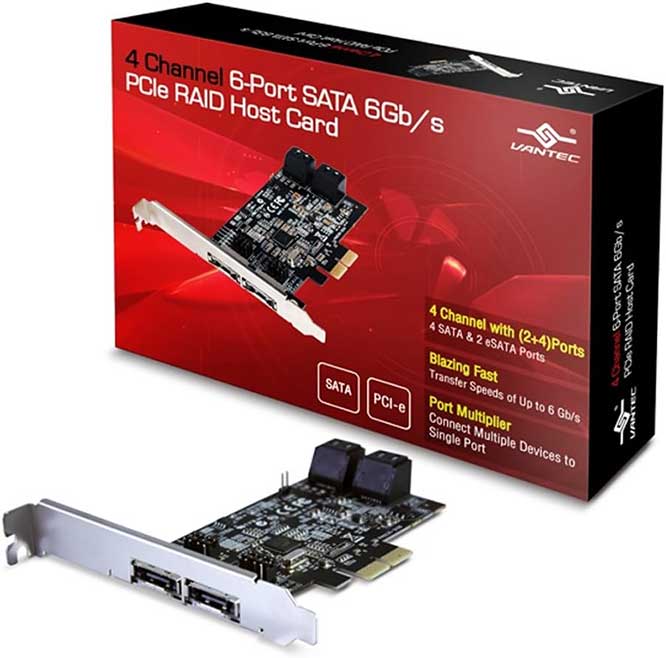
Key Takeaways:
- Supports 4 storage devices; SSD or HDD compatible.
- Offers RAID 0, 1, 10, and HyperDuo modes.
- Includes port multiplier for multi-bay enclosures.
- Requires clean OS install for RAID booting.
- Has both internal SATA and external eSATA ports.
- No UEFI support; legacy BIOS utility only.
The Vantec 4-Channel PCIe RAID Host Card is another great choice. We tested it thoroughly with both an old and newer system.
Hooking it up was a breeze; the card slipped into our PCIe x4 slot without a hitch. With four channels to play with, we had room to hook up a combination of SSDs and HDDs, making sure we’d test every aspect.
The card’s flexibility caught our eye right away. We had the option to toggle between internal SATA or external eSATA ports. That’s a neat trick, especially when we connected our multi-bay enclosure using the port multiplier function. Suddenly, one port managed four drives – quite the space-saver.
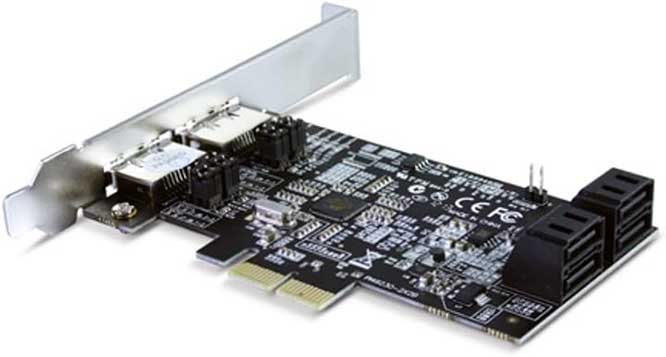
Setting up RAID configurations was another part of our experiment. We tried RAID 0 for the speed, RAID 1 for the safety, and RAID 10 for a bit of both.
The HyperDuo function was particularly interesting, blending SSD speed with HDD capacity. But remember, if you want to boot from a RAID setup, you’ll need to start with a fresh OS install.
Now, it wasn’t all smooth sailing. For starters, those jumpers for setting the port configurations are tiny and easy to lose – a bit of a headache if you’re not careful. We couldn’t get SMART data off individual drives either, which was a letdown for monitoring drive health.
In our tests, file transfers were zippy, especially with Gigabit Ethernet. We did notice, however, that when we tried to push large files to and from the virtual drive, things could bog down a bit. The WebUI also felt like a chore to access and didn’t offer much over the BIOS menu.
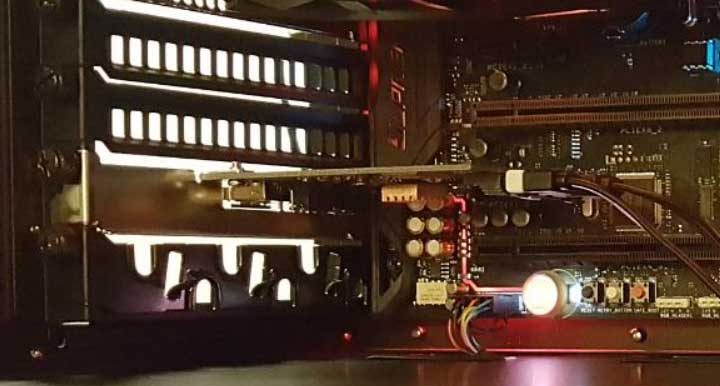
As for the RAID rebuild, it took its sweet time, longer than the manual suggested. But to be fair, even when one drive said goodbye, our data didn’t skip a beat – the RAID just kept chugging along.
Despite a couple of hiccups, like a somewhat quirky performance with Ubuntu, the Vantec card was a decent deal. It doesn’t break the bank, gives you six ports to work with, and the included low-profile bracket means it fits in smaller cases too.
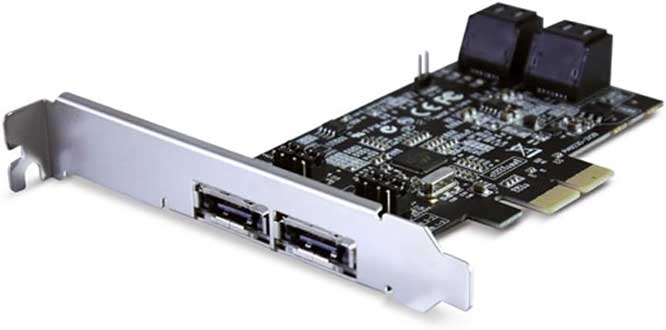
Using it in an older system to give those SATA3 SSDs a new lease on life, turned them into a storage powerhouse when set up in RAID 0.
Just be aware, if you’re rocking a newer motherboard, you might not get the full speed benefit due to the 32-bit PCI interface limit.
All in all, the Vantec 4-Channel PCIe RAID Host Card proved to be a cost-effective way to expand our storage and speed up our system, with a hardware RAID to boot. It’s good for what it does, especially if you need to spice up an older rig or expand a NAS.
3. StarTech.com PCIe RAID Controller Card
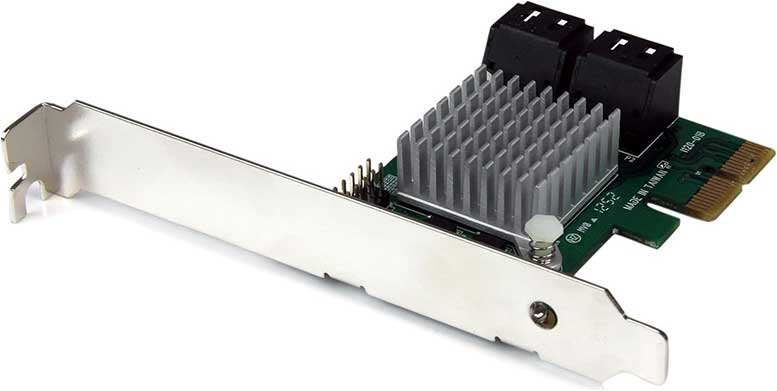
Key Takeaways:
- Adds 4 SATA III ports.
- HyperDuo technology boosts SSD and HDD performance.
- Supports RAID 0, 1, and 10 configurations.
- Compatible with Windows, Mac, and Linux systems.
- Marvell Storage Utility simplifies card and drive management.
- Offers two-year warranty for long-term reliability.
We recently had the opportunity to work with the StarTech.com PCIe RAID Controller Card. Out of the box, the card felt sturdy and well-built. With full and low-profile brackets included, it was a snug fit in our test machine, which was a plus for both tower and small form-factor cases.
Once installed, the card immediately gave us four additional SATA III ports. The setup process was simple, and we appreciated that, as we could quickly move on to the real testing.
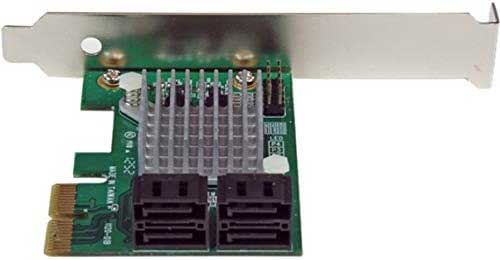
The HyperDuo SSD tiering technology was the first feature we put to the test. We were eager to see if it lived up to its promise of blending SSD speed with HDD capacity.
After setting up a HyperDuo array with one SSD and one HDD, we saw our data transfer rates soar, close to the 80% performance boost of standalone SSDs they advertised. It felt like getting a major upgrade without the hefty price tag of a large SSD.
We played around with the hardware RAID support, setting up different arrays. RAID 0 was very fast. RAID 1 gave us peace of mind with mirroring for extra security, and RAID 10 combined those benefits. However, configuring RAID 10 through the BIOS was a bit tricky due to limited sector size options, a small hiccup in the process.
Running through benchmarks, we noted that the SATA III 6Gbps interface brought our high-performance drives to life. It was especially noticeable when we transferred large files or accessed multiple files at once.
The Marvell Storage Utility was a handy tool for managing the card and drives. Although we found that while the performance was solid, it wasn’t quite on par with some of the onboard RAID options we’ve tested in the past.
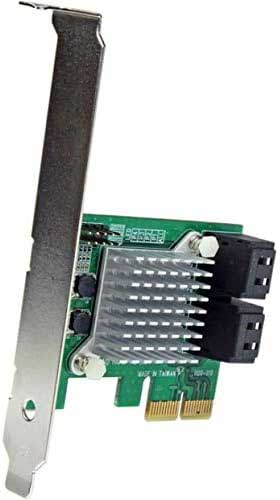
We tried the card across different operating systems – Windows, Mac, and Linux – and didn’t run into any major issues. It’s a versatile piece of kit, making it a good fit no matter what OS you’re using. It’s even backward compatible, which is great for older systems.
Customer reviews we read beforehand mentioned a straightforward setup, and we found that to be true. Some reported slower data transfer speeds, but in our use, the difference was marginal and likely won’t be an issue for most users.
The StarTech.com PCIe RAID Controller Card left us feeling like it’s a reliable choice for someone looking to expand their storage options without breaking the bank.
It performed well across various tasks and proved to be a solid addition to our test setup. Plus, the two-year warranty offers some additional reassurance.
PCIe RAID Controller Cards FAQs
What is a PCIe RAID Controller Card?
It’s an expansion card that you insert into a PCIe slot on your computer motherboard, enabling you to connect multiple hard drives or SSDs. It manages these drives in an array to provide improved performance, redundancy, or both.
Why would I need a RAID controller?
You might need one if you want to improve your computer’s data storage performance and reliability. RAID can offer faster data access speeds, data redundancy to prevent loss from drive failure, and increased storage capacity.
Can I use different sized drives with a RAID controller?
Yes, you can use drives of different sizes, but the RAID array will be limited to the size of the smallest drive. For optimal storage use and performance, using drives of the same size and model is recommended.
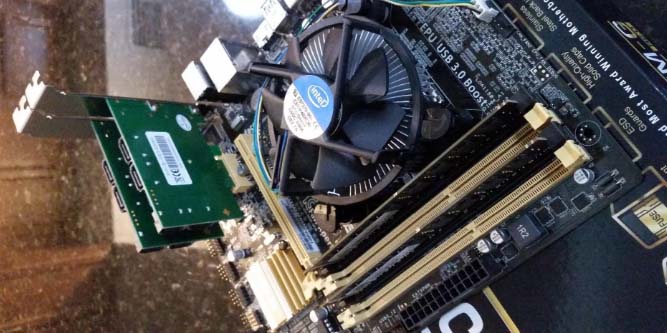
Will a RAID controller improve my computer’s speed?
A RAID controller can improve speed for data-intensive tasks if you configure it in modes like RAID 0, which stripes data across multiple drives for faster access. However, the actual speed gain depends on the RAID level you choose and your specific use case.
Is RAID a backup solution?
No, RAID is not a backup solution. It’s designed to provide continuity in case of a drive failure, but it doesn’t replace the need for regular backups. Always back up your data separately from your RAID array.
Can I boot my operating system from a RAID array?
Yes, you can boot from a RAID array if your RAID controller supports booting and you have configured the array correctly. However, ensure your motherboard’s BIOS or UEFI supports booting from a RAID controller.
Meet Ry, “TechGuru,” a 36-year-old technology enthusiast with a deep passion for tech innovations. With extensive experience, he specializes in gaming hardware and software, and has expertise in gadgets, custom PCs, and audio.
Besides writing about tech and reviewing new products, he enjoys traveling, hiking, and photography. Committed to keeping up with the latest industry trends, he aims to guide readers in making informed tech decisions.


The below is pretty moot if no win 10 as u say?
However, I dont think you do justice to the potential of Hyperduo.
Pairing a ssd w/ a big cheap hdd, serves as a cache for the hdd, & if the Hyperduo algorithm works right, yields the killer advantage of ~zero access (SSD) times on smaller, and/or, oft used files.
Larger files – meh – access time is proportionately insignificant. 150MBps linear is tolerable. Mechanically moving a head constantly, over trifles, is not.
So e.g., for a cheap, big inhouse proxy serverS cache, a redundant upgraded 128 GB sata3 SSD u have lying around, paired w/ a ~1TB HDD (or even 10 TB) would work pretty well. Compared to internet speeds & competing for shared net bandwidth on a network, even archaic sata3 hdd 150MBps ~sequential isnt bad for repeat downloads.
Alternately put, it wasnt speed that blew us away when ssdS were new (tho it was nice), it was ram like instant access.
HDDs still play a big role in large storage. This combines their strengths affordably.
Even two such arrays on one card seems doable for many such apps.
Its not data that need a lot of backup.
BTW, i dont think u said, it has a ~safe option, where the ssd contents are mirrored on the HDD. if the ssd fails, a new one can be restored from the HDD. Just saying.
the reviews at Amazon for the Vantec card are pretty bad…you sure thats the best?
We had good luck with the Vantec card. The other two are great options too, though!
Got a RAID card recommendation with a battery/cache on it? This could give near-SSD performance to HDDs and also help protect data in the event of sudden power loss.
I want to stay away from Marvel.
It’s hard to find updated drivers for their control their cards on their website.
16 TB hard drives and higher are not recognized there seems to be a 14 terabyte limit. Also does not recognize my optical drive.
Granted it could be complicated by the ASRock motherboard x470 chipset. The card doesn’t recognize the optical drives.
Running Win 10 64bit, Ryzen 2700x CPU 4.1 GHz. And 32GB 4 gigahertz Ram.
I need an 6-8 port controller card. hoping to take advantage of as close to 16 Lanes of the pcie I’ve got.
And which card would be best for a RAID 1+0 configuration?
I have three SSD’s that have read speeds of 550mb/s, and might get a fourth drive. Is there a RAID card on the market that would support up to 2000mb/s of read speed, or more? I plan to use the drives in RAID 0. Thanks!
I used the crest card and had quite a few issues with it and i don’t want to use it anymore but i wonder how you can list that card on this page. I had a few files corrupted and sometimes it would close the folder itself like if the drive got disconnected. I was using it as simple as it gets just browsing my files, copy and paste files, very basic stuff.